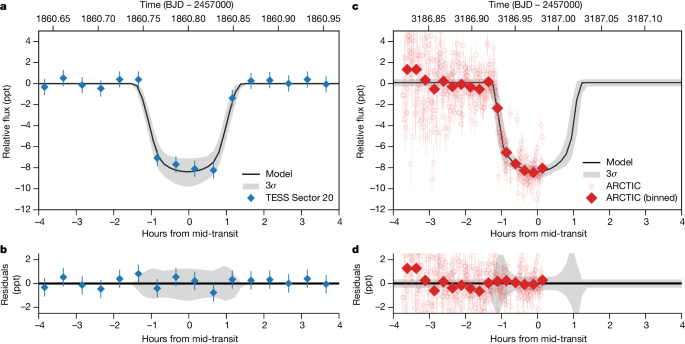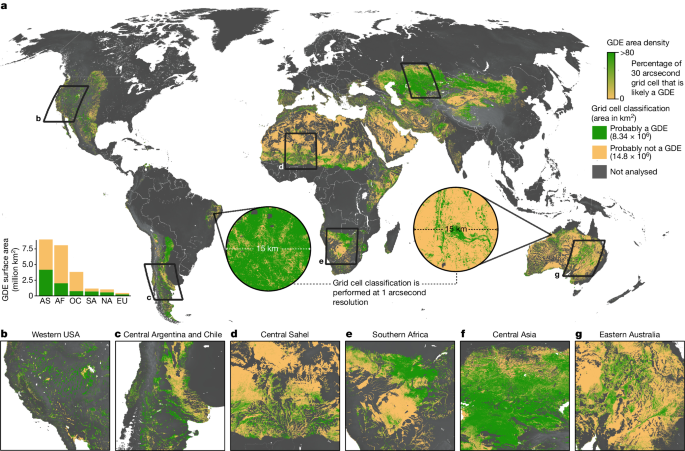2024-07-17 ペンシルベニア州立大学(PennState)
<関連情報>
- https://www.psu.edu/news/research/story/exoplanet-caught-hairpin-turn-signals-how-high-mass-gas-giants-form/
- https://www.nature.com/articles/s41586-024-07688-3
超偏心逆行軌道にあるホットジュピター始祖惑星 A hot-Jupiter progenitor on a super-eccentric retrograde orbit
Arvind F. Gupta,Sarah C. Millholland,Haedam Im,Jiayin Dong,Jonathan M. Jackson,Ilaria Carleo,Jessica Libby-Roberts,Megan Delamer,Mark R. Giovinazzi,Andrea S. J. Lin,Shubham Kanodia,Xian-Yu Wang,Keivan Stassun,Thomas Masseron,Diana Dragomir,Suvrath Mahadevan,Jason Wright,Jaime A. Alvarado-Montes,Chad Bender,Cullen H. Blake,Douglas Caldwell,Caleb I. Cañas,William D. Cochran,Paul Dalba,… Carl Ziegler
Nature Published:17 July 2024
DOI:https://doi.org/10.1038/s41586-024-07688-3

Abstract
Giant exoplanets orbiting close to their host stars are unlikely to have formed in their present configurations1. These ‘hot Jupiter’ planets are instead thought to have migrated inward from beyond the ice line and several viable migration channels have been proposed, including eccentricity excitation through angular-momentum exchange with a third body followed by tidally driven orbital circularization2,3. The discovery of the extremely eccentric (e = 0.93) giant exoplanet HD 80606 b (ref. 4) provided observational evidence that hot Jupiters may have formed through this high-eccentricity tidal-migration pathway5. However, no similar hot-Jupiter progenitors have been found and simulations predict that one factor affecting the efficacy of this mechanism is exoplanet mass, as low-mass planets are more likely to be tidally disrupted during periastron passage6,7,8. Here we present spectroscopic and photometric observations of TIC 241249530 b, a high-mass, transiting warm Jupiter with an extreme orbital eccentricity of e = 0.94. The orbit of TIC 241249530 b is consistent with a history of eccentricity oscillations and a future tidal circularization trajectory. Our analysis of the mass and eccentricity distributions of the transiting-warm-Jupiter population further reveals a correlation between high mass and high eccentricity.



